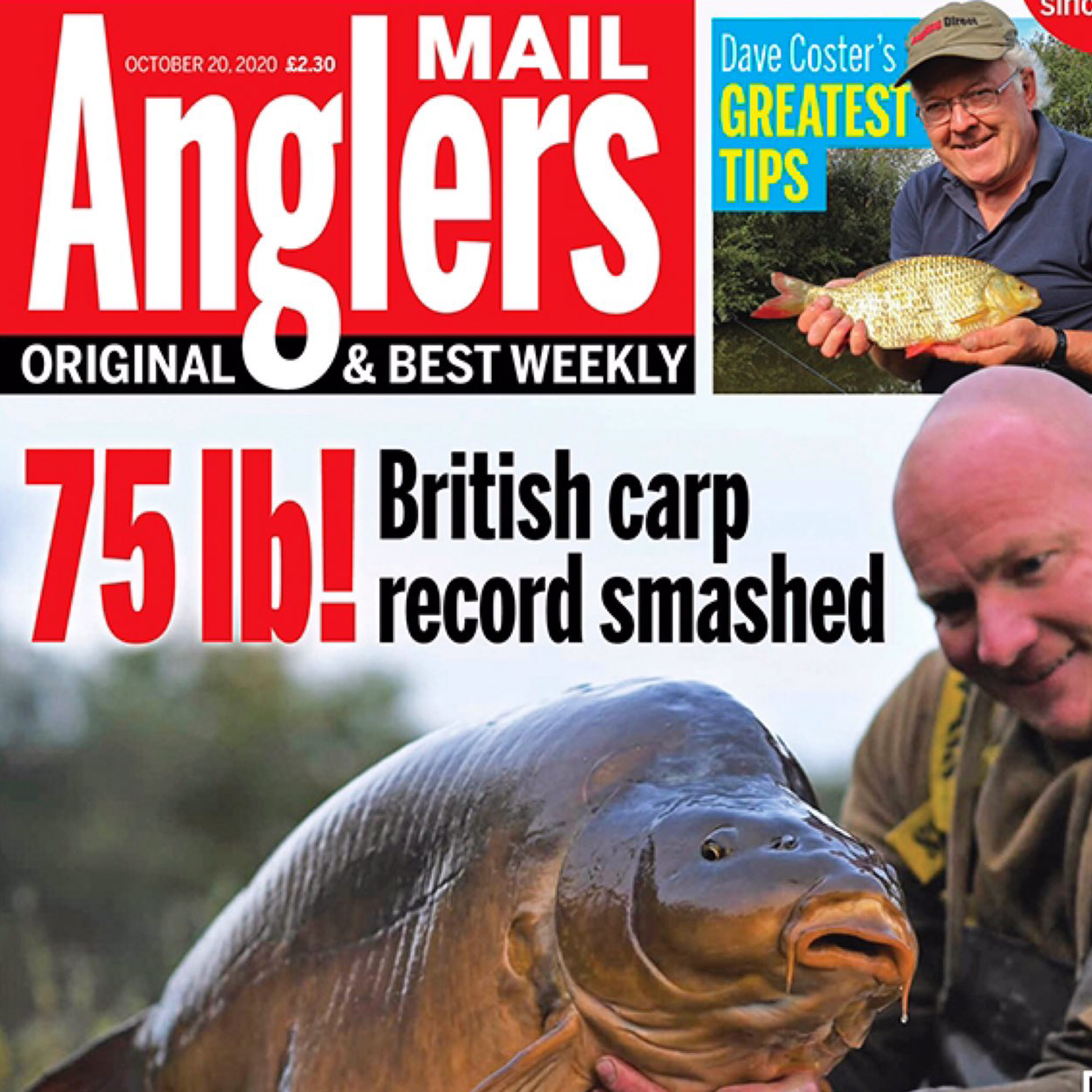How to catch mackerel: the best times, season, rig, bait and expert tackle tips for mackerel fishing
Learn how to catch mackerel and fill your coolers for bait or food with a professional guide's tips and tactics
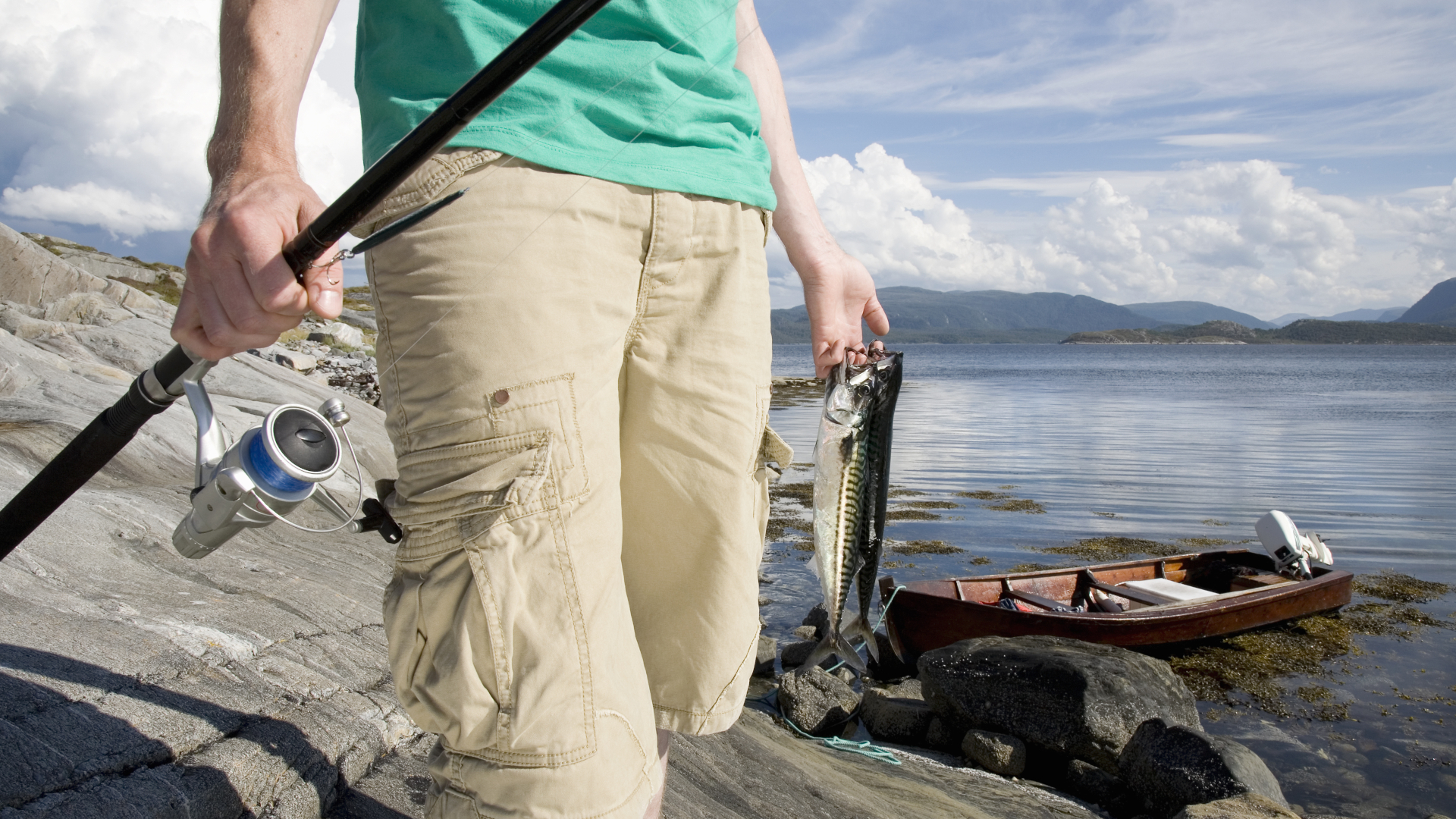
Learning how to catch mackerel is a worthwhile investment of your time because there is little that beats freshly–caught mackerel for fishing bait – it's many expert's number one choice.
This is because any fish with even the vaguest predatory instincts that swims in any ocean will eat mackerel in some form, plus it's free if you catch it yourself. It's a win–win situation for any angler.
The good news is that with the right bait and tackle, and some of our expert's mackerel fishing tips around the best tackle, baits, rigs, locations, times and seasons, you will find this plentiful fish is just waiting to be reeled in wherever the species is distributed. Bring the barbecue, too, as they're delicious grilled or fried!
Plus, mackerel fishing is the perfect way to get anyone interested in angling. For kids and those with short attention spans, it's an easy and exciting fish to catch, putting up a surprisingly good fight on light fishing tackle.
As highlighted, there are also few better baits than fresh mackerel so it's worth looking at our guide on how to catch your own bait and make the most of this fabulous fish.
With international travel opportunities currently looking restricted due to Covid-19 rules, anglers are sure to be ‘staycationing’ in bigger numbers than ever before. A day out to the coast, or a longer fishing trip offers the chance to try your luck in saltwater. But see the Angling Trust’s latest sea fishing guidelines for current, up-to-date advice on angling with coronavirus restrictions in the UK.
How to catch mackerel: The best seasons and times for mackerel fishing
If you go at the best fishing times for mackerel in the summer, when water temperatures are highest and there's an abundance of food items that mackerel eat, you will find they're common around many coastlines.
Advnture Newsletter
All the latest inspiration, tips and guides to help you plan your next Advnture!
For some of the year, they lurk too far for even the longest casters, which can make learning how to catch mackerel tricky unless you have access to a boat or kayak, in which case they're accessible for most of the year.
But it’s in the warmer months when they can be found in colossal shoals, pursuing bait fish such as sandeels near to shore, making peak summer, autumn and anytime the water temperatures are highest the best time to catch lots of mackerel.
Regarding the time of day, as with many species, mackerel feed best at dawn or dusk. Their prey – small fish, sandeels, launce, shrimps, squid and so on – are also most active around these times. If you can fish when the light changes around dawn or dusk, with a tidal change just before or after this time so the water is moving in or out a fair amount, then you'll be most likely to have a busy session.
You can also try night fishing by using a light stick or glow stick on the line to attract the mackerel to the rig. This can work a treat off a pier or jetty. Use the glowstick like a big float or bobber and fish near pier lights or where baitfish congregate with small strips of fresh mackerel belly with the white flesh on a size 8 to 1 hook a few feet under the float, or use a baited sabiki rig.
How to catch mackerel: The best lures, feathers and baits for mackerel fishing
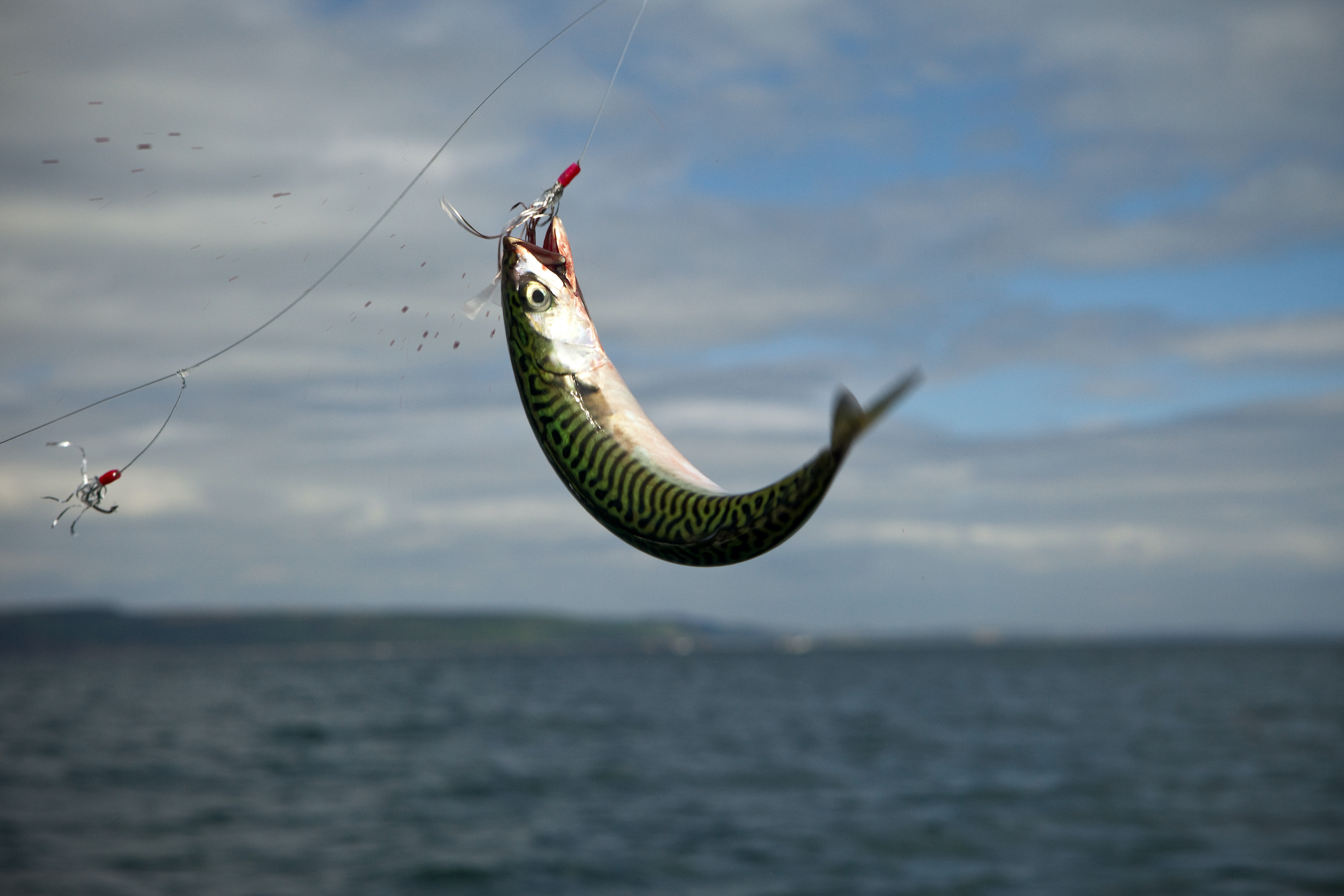
Being a true shoal fish, individuals have little time to be fussy over a potential meal, which makes catching mackerel very easy to catch on relatively simple tackle. A small shiny lure such as a spoon, spinner or baitfish imitation, and float fishing with small strips of bait, are successful mackerel tactics. But a string of feathers or small lures beats all methods.
A string of mackerel feathers consists of around six hooks, each dressed with an artificial enticement to make it look like a small fish or food item moving in the water. The larger, rainbow–coloured feathers mounted on large, crude hooks that were popular years ago are a little old–fashioned now, with smaller more modern versions more effective at getting bites.
A hook size of between four and 1/0 is recommended with a small amount of bright or dark dressing (yellow, silver, red, black and dark green are really effective) the best option for imitating tiny sandeels that mackerel often snack on. The modern version of the mackerel feather is sometimes known as a sabiki rig, and consists of several hooks dressed with a tiny sliver of bait–imitating material, like a bit of fish skin or some shiny threads like tinsel. These will catch lots of mackerel.
Just make sure the rig itself is strong enough to cast the weight of the lead or rig in total, if you're mackerel fishing from beach or pier, remembering that you need about 10lb of breaking strain in the line for every ounce you're likely to cast. So a rig made with 20lb line would work well with a 2oz weight, 30lb for a 3oz weight, and so on.
A good expert tip for anyone who wants to catch mackerel is to use a bright metal jig or baitfish–imitating lure at the bottom of the rig, in place of a usual weight. This adds an extra attractant to the rig and will lure mackerel in as it flutters through the water when it's being retrieved, or dropped off a boat.
Another good tip for mackerel fishing is to bait the sabiki or feather rigs with tiny strips of fish or squid – just enough to enhance the taste and smell of the bait in the water. On hard days, this can really make a difference. Mackerel seem more eager to bite and hang on to something that tastes real.
- How to plan a fishing trip: all you need to know before you go
- Best fishing spots: how to find the perfect place to go fishing
- How to choose a fishing reel: our expert guide to this angling essential
How to catch mackerel: The best tackle, rods, poles and reels for mackerel fishing
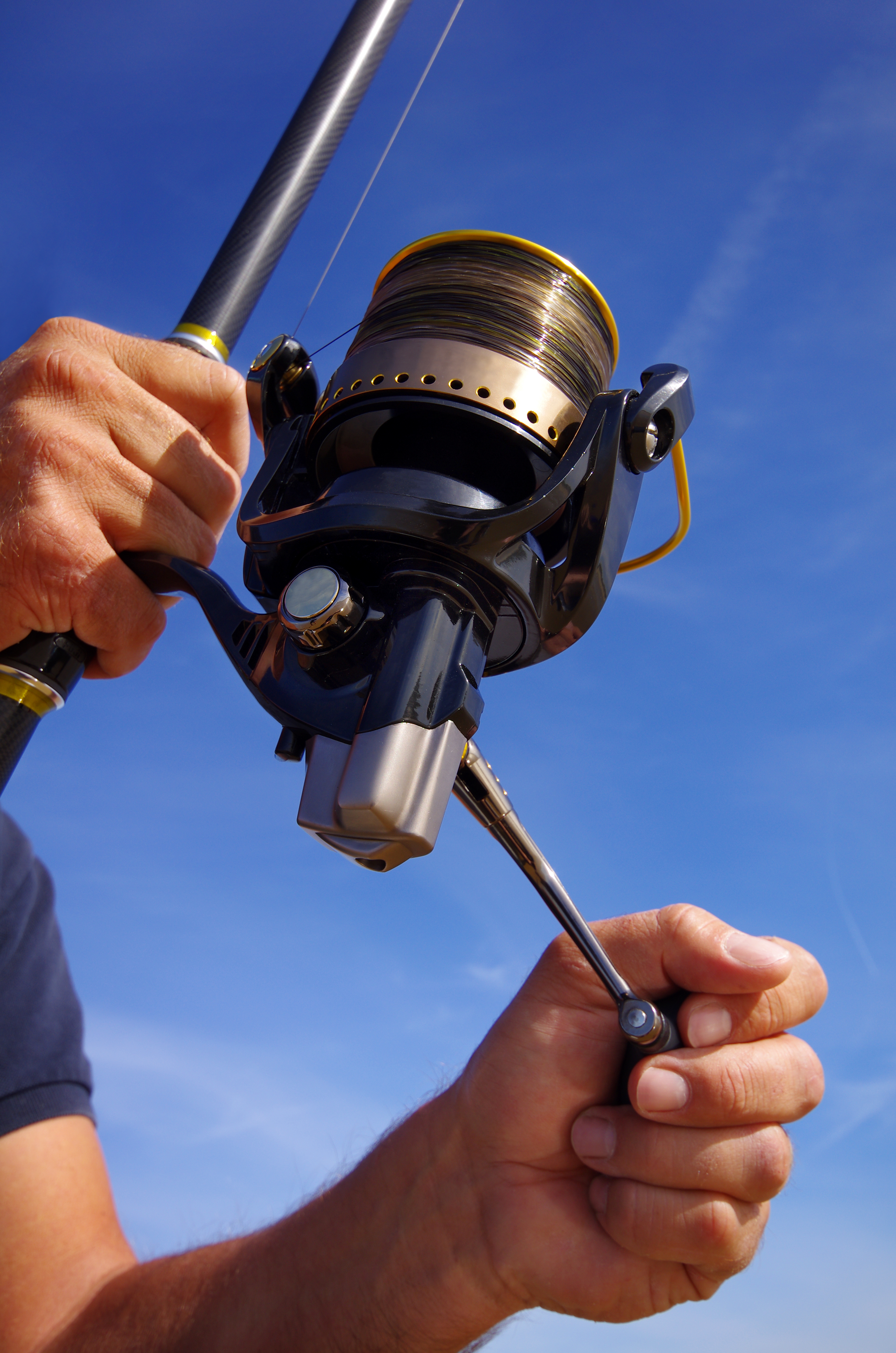
Regarding the best fishing tackle for catching mackerel, megabucks rods aren’t usually essential; a 10–13ft (3-05–3.65m) rod such as a medium–power saltwater beach or surf rod capable of casting 3–6oz is perfect. Match this with a 6000 to 8000–size spinning reel or equivalent multiplier and you have a solid mackerel fishing set–up that even beginners will find easy to use.
A freshwater rod can also be used with carp, pike and catfish–orientated models suitable. Something around 12ft (3.6m) with a test–curve of 3–4lb that's comfortable casting a 3oz weight is advisable. Big pit–style reels and large fixed–spool reels are also suitable tackle for mackerel fishing but, if using gear made for freshwater, make sure it gets all gets an extremely thorough wash in warm soapy water afterwards to avoid rust and seizing issues.
So, for general mackerel fishing tackle from a beach or pier, we like the 12ft–plus rod option coupled it with a large reel loaded with about 12lb (5.44kg) monofilament, or 20lb (9kg) braided main line, with some stronger monofilament line (30–60lb) to act as a casting leader. Check out our guide to the best fishing line to inform your selection. A string of good quality mackerel feathers, or a sabiki rig, and suitable weight completes the set-up.
A 3 oz (85 gm) distance lead is usually more than adequate for reaching mackerel shoals, but if your rod and tackle can handle it, don't be afraid to go much heavier to reach a more distant shoal. But they can sometimes swim within a few yards of the shore as they wreak havoc on their prey, so a long cast and big weight isn't always needed.
A finger stool protects your index finger from repeated casting. A priest quickly dispatches mackerel destined for the table or for winter pike baits. Kill those fish firmly but quickly to prevent prolonged suffering and put them on ice immediately to preserve the freshness. Be aware: they will go bad quickly in the sun or at room temperature due to the high oil content, so cooling them quickly is essential.
From a boat, your tackle options are a lot wider as you just have to reel up and down the water column when you drop the rig over the side – no casting involved. A short 6–8ft (1.8–2.45m) rod rated for 10-20lb line combined with small multiplier loaded with 10–20lb mono or 20–30lb braid is going to be the best boat fishing tackle for mackerel.
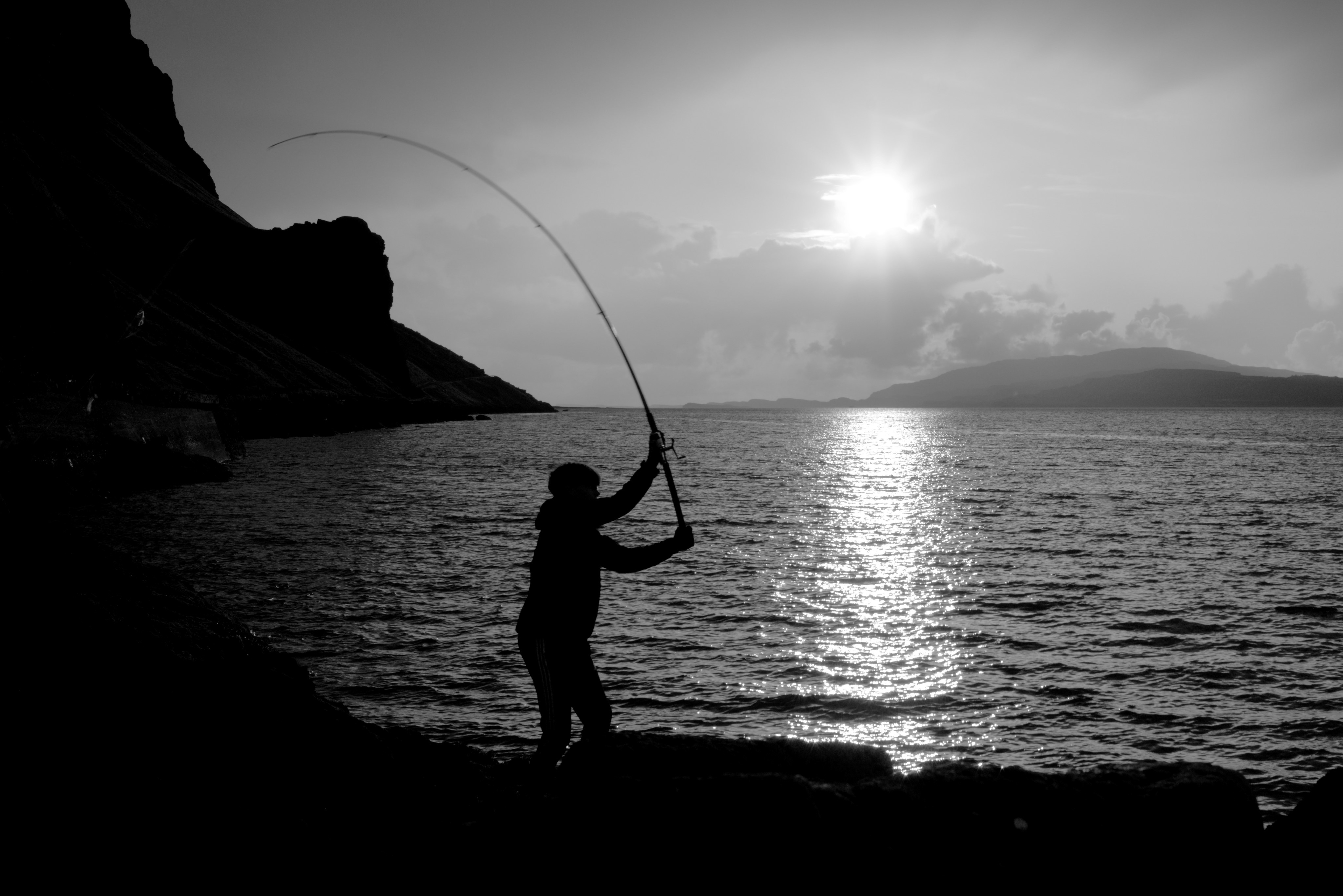
The best locations for mackerel fishing: what makes a great mackerel spot?
First, let's set out some rules for mackerel fishing locations. Being a highly mobile migratory fish, mackerel like deeper water and any beach, jetty, pier or breakwater that gives you access to deep water is a great choice, particularly if it's in open ocean.
You wouldn't, for example, be advised to target mackerel inside a harbour or inland estuary, but a pier or rocky point jutting out into the wide blue yonder is a perfect spot. Clear blue water is also preferred over anything muddy or sandy.
Proximity to bait fish is also important. You'll often get a clue that mackerel are on the hunt by seeing scores of small fish scatter on the surface as they're chased to the surface by hungry shoals. Observing things like this and looking to find deeper water with some current are also good ways of increasing your chances of success.
Now, to put the theory into practice, let's look at an example of a great mackerel fishing location in the UK: Chesil Beach in Dorset. It is probably the most prolific mackerel fishing venue in the UK, and examining why will help you identify any of your local hot spots.
Made entirely of pebbles (18 billion apparently!) and stretching from Portland to West Bay, Chesil is a steeply shelving venue with deep water close in. This scenario is perfect for finding dense shoals of bait fish and mackerel near to shore – and ideal for pleasure anglers who can still catch fish regularly without the need for extreme casting.
Our expert Matt Sparkes gives this advice: "Mackerel are found along the whole coastline of the UK, where colossal shoals mean bumper hauls are a possibility. There is the chance of a full string of fish on nearly every cast – especially on a rising tide.
"The most effective way of catching mackerel here is to use a string of lures or feathers. These basic lures are retrieved erratically through the water, mimicking small baitfish such as sand eels, which are the staple diet of mackerel. Plain white through to vivid day-glo orange colors work best here. Fancier brands score well, too, with strips of glittery tinsel and silver reflector strips designed to glint and flash through the water."
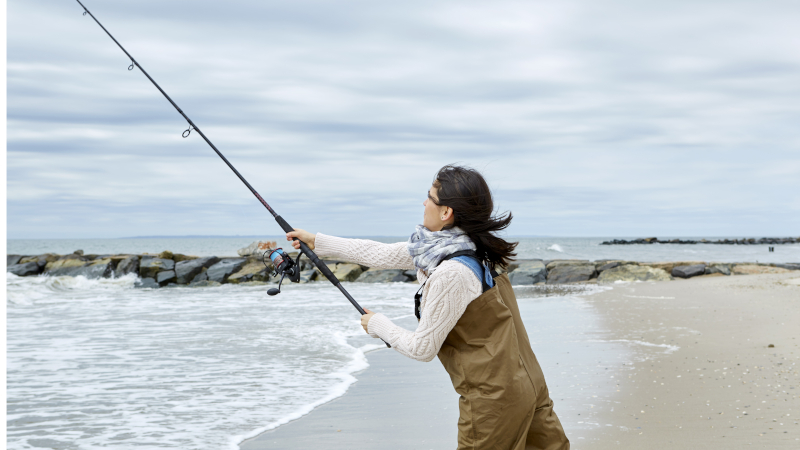
The best mackerel fishing tactics: how to work feathers and find fish like a pro
Here’s how you use mackerel feathers or a sabiki rig once they’re attached to your leader, along with a lead or metal jig for a casting weight.
Cast out as far as you can and tighten up a second or two after the lead hits the water. Then begin the retrieve immediately by simply pulling the rod back in one continuous sweeping motion whilst keeping the butt at waist height, like a big lever.
You then bring the rod forward and down again while reeling in the slack line quickly, and repeat. This is known as pumping and winding. You’ll know when you’ve hit a shoal of mackerel – everything suddenly goes solid and then it’s simply a question of slowly winding them in.
If you're using a small single lure, cast as far as you can and let it sink for a few seconds before starting a fast, erratic retrieve without moving the rod too much. The lure will have it's own built-in action.
Try letting the lure or feathers sink a little longer before retrieving if you're not getting bites – you'll find mackerel feeding both near the surface and near the bottom, so working out where they're hanging out is key to getting a good haul. Work the water column until you find them.
It's exciting stuff, mackerel fishing, especially with a full set of six lively fish on the line at once – it’ll certainly put a pleasing bend in your rod!
Running from 1964 until 2020, Angler's Mail was the UK's leading weekly magazine devoted to coarse fishing, telling readers everything they needed to know about which fish to catch, where to catch them, and what kit they needed to do it. Now, loads of the magazine's expert advice can be found on Advnture.com, as a helpful resource for angling newcomers and experts alike.
